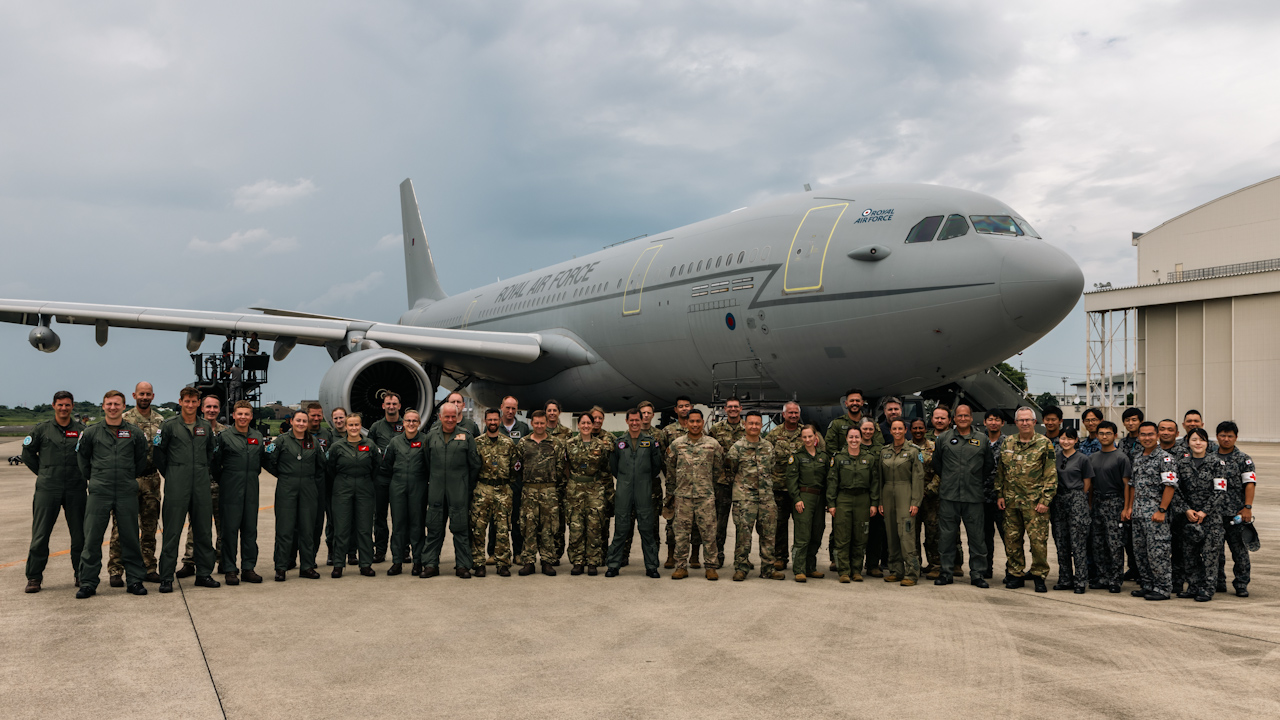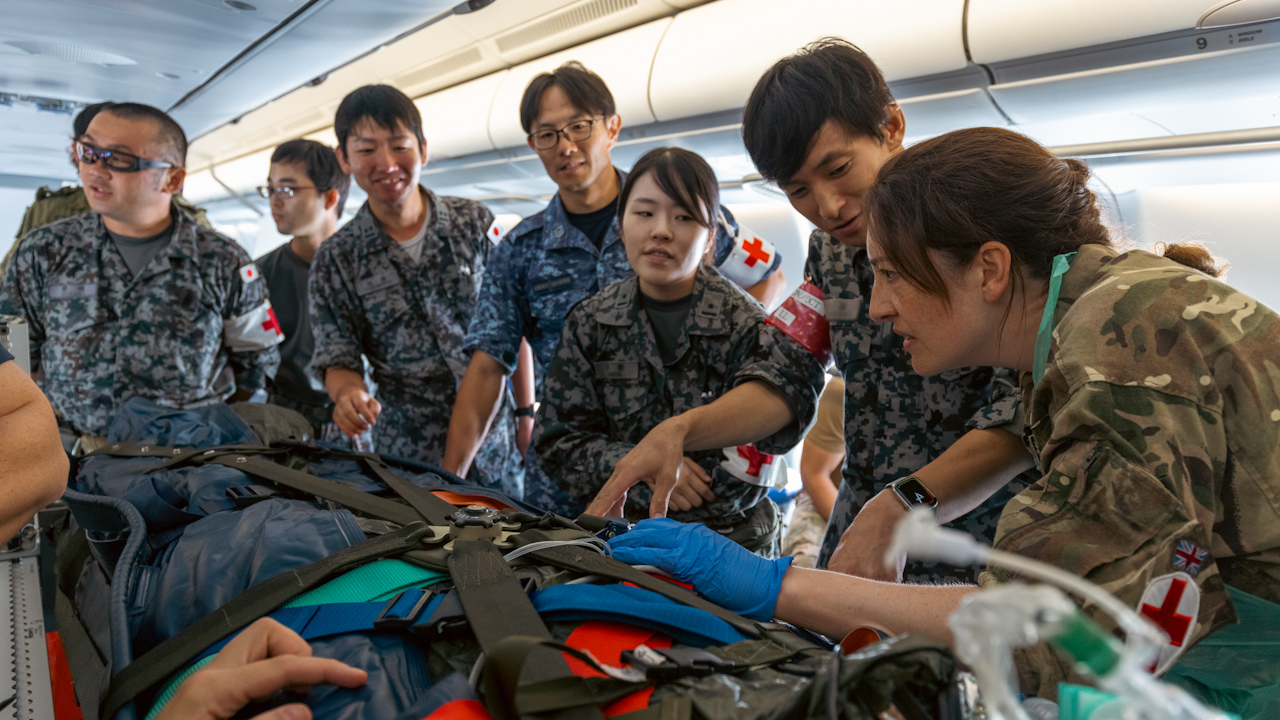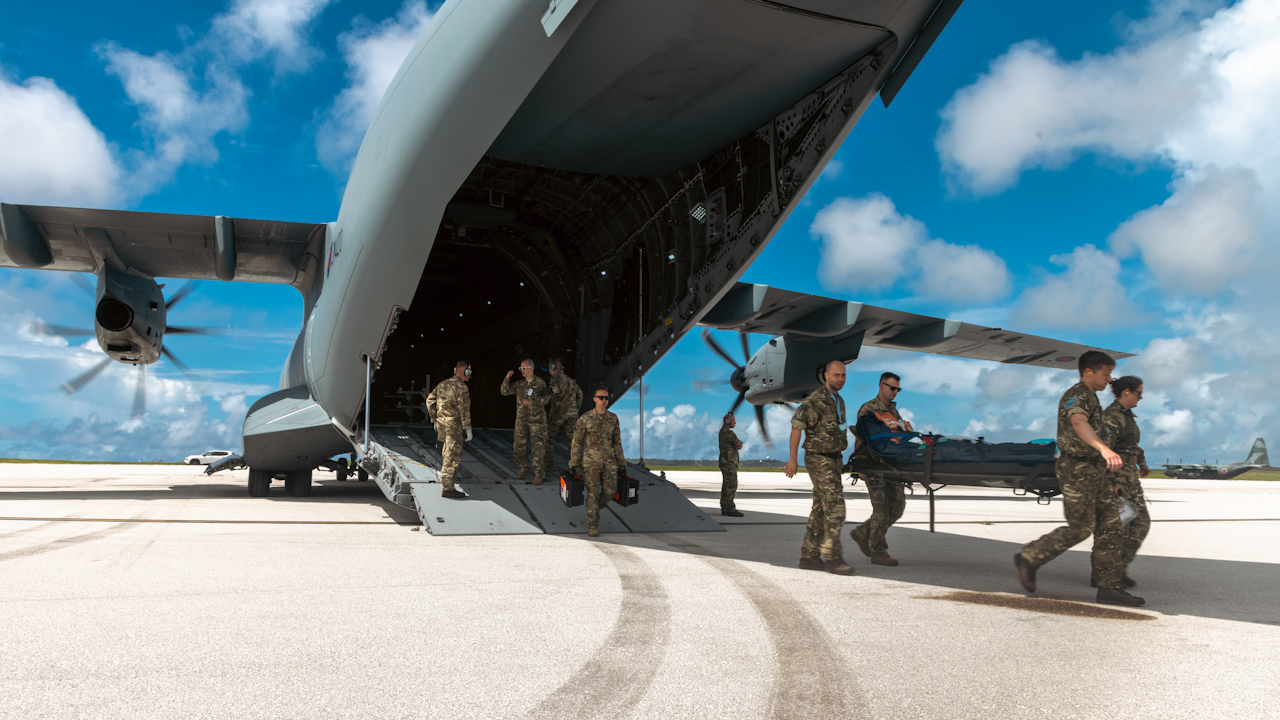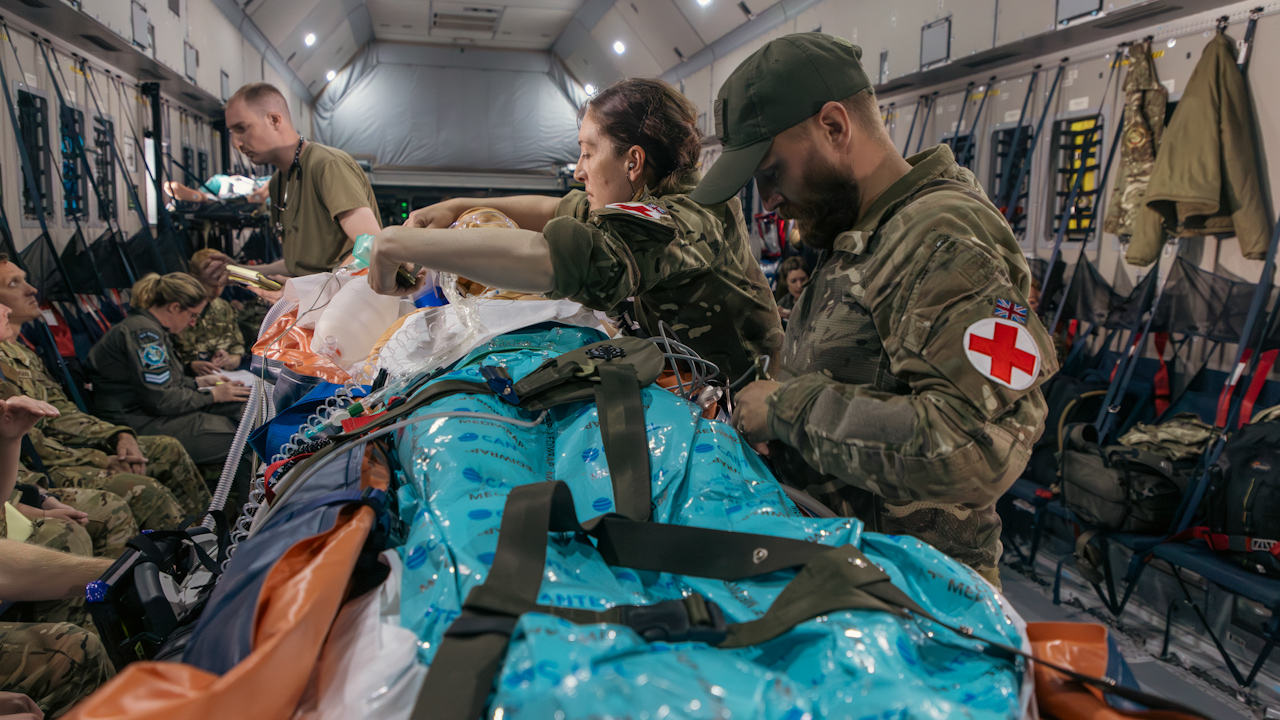
RAF's Tactical Medical Wing plays leading role in Exercise Mobility Guardian 23

The Royal Air Force's Brize Norton-based Tactical Medical Wing has taken part in Exercise Mobility Guardian 23, one of the largest aero medical evacuation exercises of its kind.
Conducted by the United States Air Mobility Command, the exercise included personnel from Australia, Canada, France, Japan, New Zealand, America, and Great Britain.
Its aim was to improve interoperability between the nations while operating from Northern Australia to Japan and as far east as Hawaii.
Flight Lieutenant Sian White, who led the planning for the Tactical Medical Wing deployment, said: "This exercise is incredibly important for Tactical Medical Wing, as it is giving us the opportunity to operate in this part of the world for the first time and also to develop interoperability with our colleagues from the other nations.
"It has been an extremely valuable learning experience for everyone, medical teams, aircrew, and enablers alike.
"We have gained an understanding of the other nations' procedures and practices as well as equipment, whilst sharing our own ways of operating with them."

The integration of medical personnel from each nation was an important element of the exercise.
The training also allowed the RAF to overcome a concept known as the 'tyranny of distance' – understood as a tendency towards poor military performance, the further personnel are away from Great Britain.
Also important was the opportunity to practise procedures associated with the core role of the Tactical Medical Wing in a simulated and controlled environment.

Sixteen Tactical Medical Wing medical personnel were deployed on the exercise, including two Aero Medical Evacuation Teams, an Aero Medical Evacuation Liaison Officer, Infection Prevention Control Specialist and two Medical Training Officers to oversee the training on the exercise.
The Royal Air Force also used an Atlas A400M and a Voyager aircraft to train alongside their American and New Zealand counterparts.
They also practised how to respond to humanitarian disasters, such as typhoons or tsunamis.










